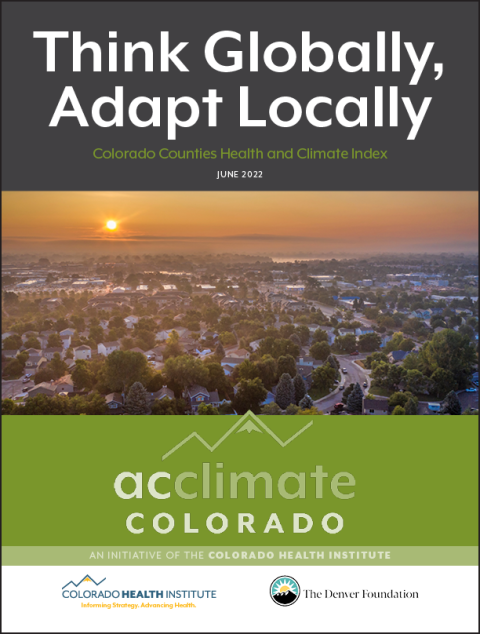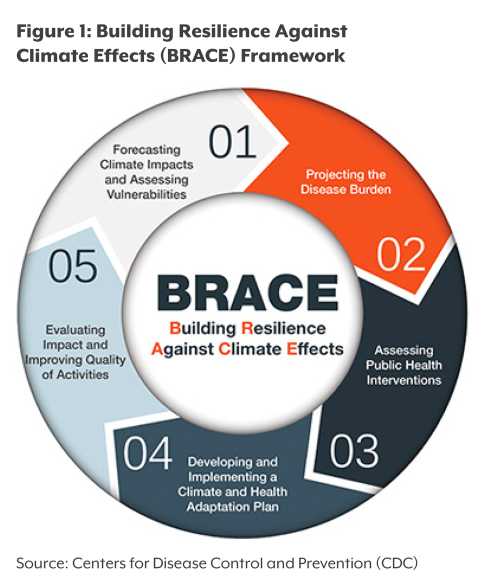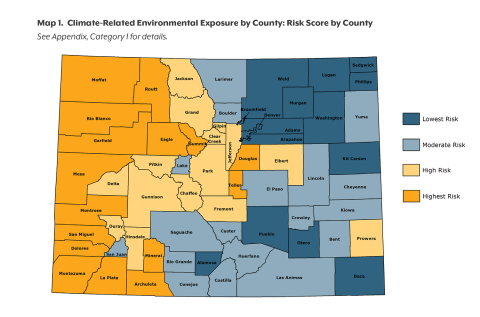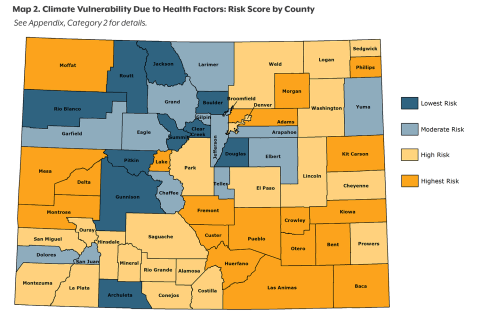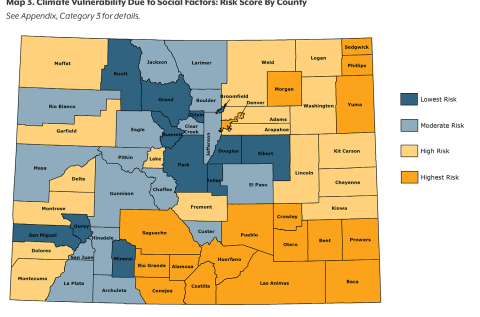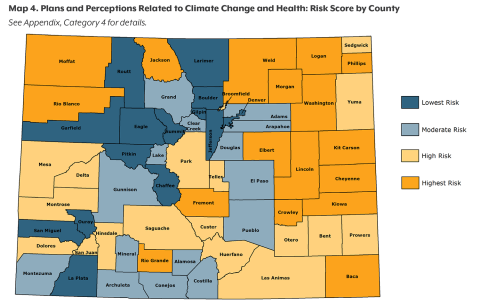Colorado's Environment, Coloradans' Health
Climate change is affecting Colorado’s environment. Earlier snow melts, drier soils, and bark beetle invasions have taken a toll on Colorado’s ecological systems. Colorado’s average temperature has increased by about 2 degrees Fahrenheit in the past 30 years.1 Projections suggest it could increase by an additional 2.5 to 5 degrees Fahrenheit by 2050.2
Most Coloradans are aware that the state’s vegetation and wildlife are deeply affected by these changes, but less than half of residents consider their own health to be in jeopardy.3
Climate change’s impacts on human health include an increase in disasters like wildfires, mudslides, and floods, and more persistent changes like the growing number of days with extreme heat, which affects the cardiovascular, respiratory, and nervous systems and exacerbates air pollution. Climate change is also affecting mental health, including stress, anxiety, and depression.4
Climate change is likely to increase many health disparities: Certain populations, including people who work outside, people living in poverty, children, people with chronic diseases, and many communities of color, are more vulnerable to these and other impacts.
The need to prepare to support human health in a changing climate is becoming increasingly urgent. In 2019, the state recorded its highest ever temperature: 115 degrees Fahrenheit in Lamar.5 In the summer of 2021, high ozone alerts were a daily occurrence along the Front Range, and wildfire smoke affected air quality across the state. In fact, three of the most destructive and far-reaching wildfires on record occurred in 2020 and 2021.
Mitigation and Adaptation
Climate change policy has two general categories: mitigation and adaptation. Mitigation is preventing or reducing greenhouse gas emissions that are warming the planet. Adaptation is preparing for life in a warmer world. Many actions are co-beneficial — they can serve both purposes.
Reducing greenhouse gas emissions supports human health by helping to reduce air pollutants and prevent additional climate change. Colorado has an ambitious Greenhouse Gas Pollution Reduction Roadmap that aims to cut emissions to 90% of 2005 levels by 2050.
But climate change is already happening, and even the most ambitious mitigation policies will take time to bear fruit. In the meantime, it is critical that policies and plans also focus explicitly on adaptation and on the impacts of climate on health.
Federal, state, and local leaders have recently taken steps to prioritize protecting the health and well-being of communities. A 2021 law created a unit at the Colorado Department of Public Health & Environment to lead work to reduce environmental health disparities in communities of color and low-income communities. In 2022, legislators passed a bill creating an Office of Climate Preparedness.
Much of this adaptation work must take place at the local level. Communities across Colorado have already started adapting to the impacts of climate change on health, but the degree of preparedness varies widely across the state. CHI’s Health and Climate Index is designed to provide data and highlight local dynamics and vulnerabilities that can inform this urgent work.
COVID-19 and Climate Change
The COVID-19 pandemic holds lessons for climate adaptation planning. Like the pandemic, climate change affects all Coloradans, but some are more vulnerable than others.6 Research suggests that people with fewer financial resources, some communities of color, people with chronic conditions like asthma, cardiovascular disease, and diabetes, and older Coloradans are likely to be more affected by a changing climate.7 These same groups were particularly vulnerable to COVID-19.8 Some lessons for organizations and governments working to improve health and reduce disparities include:
- Share Information Openly With the Community. Partner with community-based organizations and use existing relationships; to share important information about risk and resources to those most disproportionately affected by climate exposures.
- Foster Authentic Community Involvement. People in groups identified as more vulnerable should be directly involved in the climate adaptation planning process. This includes identifying needs and possible solutions and participating in decisions that may affect their health or environmental conditions in their communities.
- Invest Now or Pay Later. Health systems, local governments, and community-based organizations should invest now in staff, training, resources, and infrastructure to prepare for current and future climate risks.


